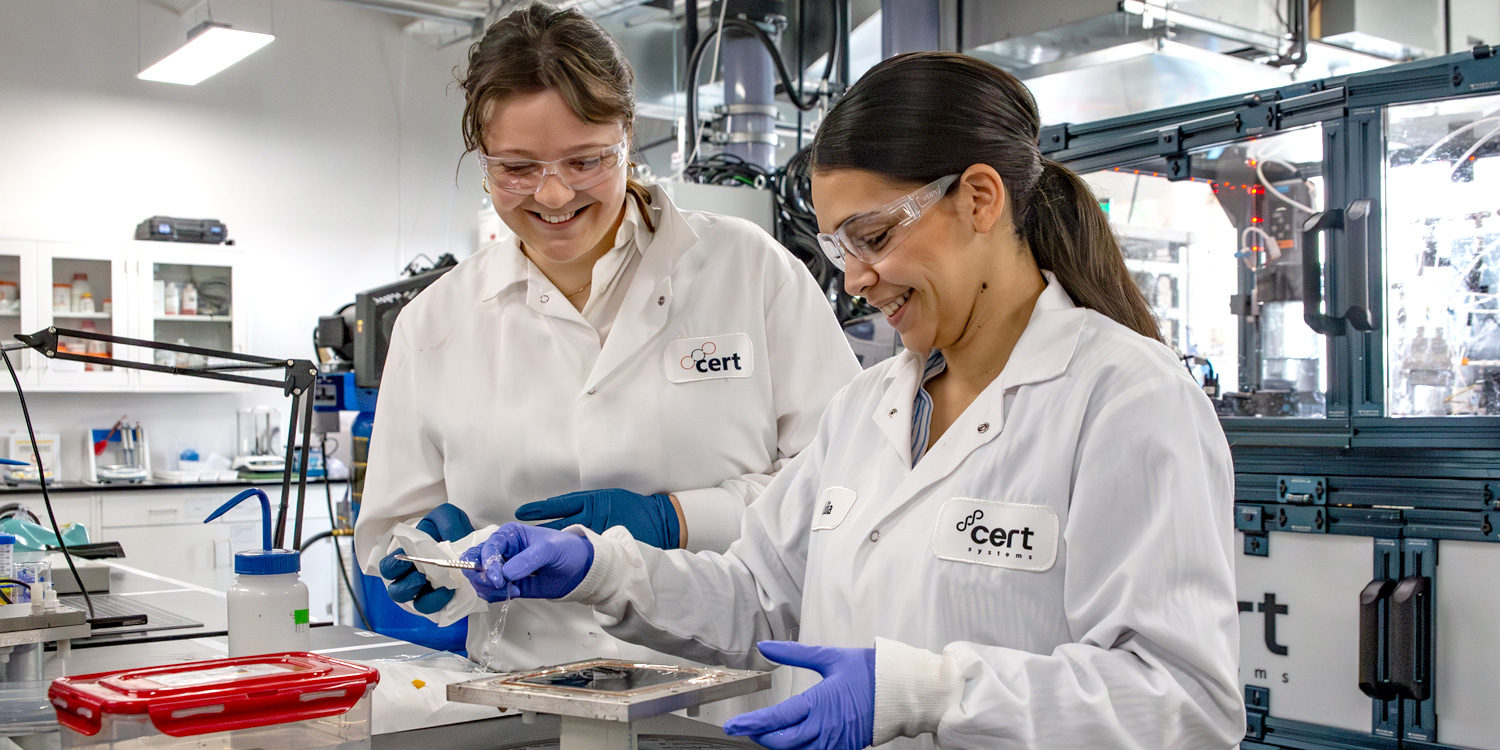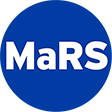Hire Learning: CERT Systems is transforming emissions into useful materials
By Steve McCann | June 25, 2025

The scrappy Toronto startup is powered by water, electricity and a burning desire to tackle climate change.
Ethylene is in everything — or close to it. The petrochemical is used in the manufacturing of cars, cosmetics, textiles, mattresses, packaging, healthcare products and even construction materials. But conventional ethylene production is carbon intensive, generating nearly 13 percent of the petrochemical industry’s yearly emissions.
Demand isn’t going away anytime soon, but as Christine Gabardo points out, more sustainable production methods could have a significant impact on countless supply chains. She’s the co-founder and chief technology officer of CERT Systems, which has found a way to make ethylene through electrolysis, a technique that uses direct electrical currents to catalyze chemical reactions. The company’s solution combines CO2 captured from industrial sites with water and renewable electricity to reconfigure the compounds. And because CERT Systems is using carbon dioxide as feed stock, every tonne of ethylene produced sequesters more than three tonnes of CO2.
Gabardo has been with the company since it began as a research project at the University of Toronto. By 2021, with the support of Breakthrough Energy Canada, that post-doc endeavour had spun out into a cleantech startup, making it to the semifinals of the NRG COSIA Carbon XPRIZE competition along the way. CERT Systems has since moved into its own digs in Toronto Stockyards neighbourhood, is part of the MaRS Women in Cleantech program and has developed a working model that’s slightly bigger than its original Rubik’s cube–sized prototype.
Here, Gabardo talks about the challenges of scaling a hard-tech venture, the unique adaptations involved in shifting from academia to entrepreneurship and the outside-the-box benefits of team hackathons.

Co-founder and CTO Christine Gabardo
Why is producing more sustainable ethylene so important?
The chemical industry emits gigaton-level emissions to produce the molecules our society depends on, so being able to produce ethylene in a more sustainable way is really important. And we’re not substituting a lesser product — what we produce is chemically identical to fossil-based ethylene, which means potential users of our technology don’t have to change the expensive equipment they have already invested in.
What has it been like to make the transition from academia to entrepreneurship?
You’re learning a whole new language. In academia, the science and the element of discovery are what’s important; in entrepreneurship, it’s about how your product is going to make money and impact the world in a different way. Understanding how to communicate the technology to different audiences has been a huge learning experience.
Do your origins as a research spinout create a sense of being underdogs?
Yeah, I don’t think we’ve lost that — it pulls out that scrappiness and creativity for us to approach different problems in ways that are faster and more efficient.
What are the challenges of scaling a hard-tech solution?
It’s a much longer path to commercialization compared to software, and it requires more time and money to buy equipment and run experiments. There are also a lot of people involved in creating an entire system to do all that, so it’s pretty challenging.
You mentioned people. What are you looking for in a hire?
Because this is hard to do and there are a lot of failures along the way, having that underlying passion to create something that will benefit the environment is really crucial. And as we take on larger projects, there are opportunities to touch every aspect of a project that you wouldn’t normally get in a larger corporation.

Tell me about working in Toronto’s Stockyards neighbourhood.
There are many TTC buses to get you to the subway, so it’s convenient for commuting. There are a lot of microbreweries in the area. Our team has gone kayaking and canoeing together along the Humber River.
How else do you foster creativity and collaboration as a team?
It’s a balance between creativity and innovation, like, sticking to the milestones that we need to hit. In software companies, they do hackathons where they’ll work on something tangentially related to whatever they’re doing. What we’ve done is break into teams where people have a week to run experiments that are riskier or not exactly related to what they’re doing. It’s an opportunity to propose new ideas that aren’t necessarily aligned with our immediate milestones, but could lead to some interesting outcomes. Being able to step away for a week, focus on something else and learn something new — that fosters collaboration between people who don’t normally work together, and it has brought fresh ideas into our technology pathway.
Tell me a bit about what your team is working toward.
We’ve received our pilot plant — two 10-foot-long units with all the pumps and everything in our reactor — that enables us to test our entire process of capturing and converting carbon dioxide into ethylene, methane, ethanol and syngas, which is another chemical that can be upgraded into fuels. Right now we’re producing tens of kilograms of ethylene per day. Our next pilot would produce hundreds of tonnes of ethylene per year.
What motivates you?
The work we’re doing hasn’t been done before. Every day has different challenges, but I leave feeling like I’ve accomplished something.
Canadian tech ventures are always looking for talented new hires. Explore the opportunities available now.
Photographs: Kelvin Li
 Steve McCann
Steve McCann